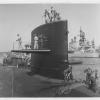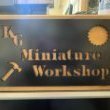
Roger Pellett
NRG Member-
Posts
4,442 -
Joined
-
Last visited
About Roger Pellett

- Birthday 06/04/1943
Profile Information
-
Gender
Male
-
Location
Duluth, MN
-
Interests
Naval Architect, Scratch Modeler and maritime history researcher. Current modeling interest- Great Lakes Steamship Benjamin Noble
Nautical ResearchvGuild Member
Author: Whaleback Ships and the American Steel Barge Company published by Wayne State University Press
Recent Profile Visitors
-
 Roger Pellett reacted to a post in a topic:
ZULU 1916 by Ras Ambrioso - 1/48 scale - stern paddlewheeler
Roger Pellett reacted to a post in a topic:
ZULU 1916 by Ras Ambrioso - 1/48 scale - stern paddlewheeler
-
 Roger Pellett reacted to a post in a topic:
Mycenaean War Galley by Woodrat - 1:48 - Shell first Plank on Frame
Roger Pellett reacted to a post in a topic:
Mycenaean War Galley by Woodrat - 1:48 - Shell first Plank on Frame
-
 Roger Pellett reacted to a post in a topic:
Bending hard brass.
Roger Pellett reacted to a post in a topic:
Bending hard brass.
-
 Roger Pellett reacted to a post in a topic:
Paddle to the Sea by Jason Builder - Solid Wood - 1941
Roger Pellett reacted to a post in a topic:
Paddle to the Sea by Jason Builder - Solid Wood - 1941
-
 Roger Pellett reacted to a post in a topic:
Mary Rose by Baker - scale 1/50 - "Your Noblest Shippe"
Roger Pellett reacted to a post in a topic:
Mary Rose by Baker - scale 1/50 - "Your Noblest Shippe"
-
 Scottish Guy reacted to a post in a topic:
Thermopylae by My Fathers Son - or as near as I can get it
Scottish Guy reacted to a post in a topic:
Thermopylae by My Fathers Son - or as near as I can get it
-
 Scottish Guy reacted to a post in a topic:
Thermopylae by My Fathers Son - or as near as I can get it
Scottish Guy reacted to a post in a topic:
Thermopylae by My Fathers Son - or as near as I can get it
-
 mtaylor reacted to a post in a topic:
Blairstown by mcb - 1:160 - PLASTIC - Steam Derrick Lighter NY Harbor
mtaylor reacted to a post in a topic:
Blairstown by mcb - 1:160 - PLASTIC - Steam Derrick Lighter NY Harbor
-
 mtaylor reacted to a post in a topic:
85' ARB by Melissa T. - Scale 1:32 - POB - First Scratch Build
mtaylor reacted to a post in a topic:
85' ARB by Melissa T. - Scale 1:32 - POB - First Scratch Build
-
 Scottish Guy reacted to a post in a topic:
Thermopylae by My Fathers Son - or as near as I can get it
Scottish Guy reacted to a post in a topic:
Thermopylae by My Fathers Son - or as near as I can get it
-
 Roger Pellett reacted to a post in a topic:
TI Europe by Javelin - 1/700 - PLASTIC
Roger Pellett reacted to a post in a topic:
TI Europe by Javelin - 1/700 - PLASTIC
-
 Roger Pellett reacted to a post in a topic:
Blairstown by mcb - 1:160 - PLASTIC - Steam Derrick Lighter NY Harbor
Roger Pellett reacted to a post in a topic:
Blairstown by mcb - 1:160 - PLASTIC - Steam Derrick Lighter NY Harbor
-
 Canute reacted to a post in a topic:
Drill bit suggestions
Canute reacted to a post in a topic:
Drill bit suggestions
-
 Roger Pellett reacted to a post in a topic:
Santa Maria by MrBlueJacket - FINISHED - Aurora/Heller scale - 1:90
Roger Pellett reacted to a post in a topic:
Santa Maria by MrBlueJacket - FINISHED - Aurora/Heller scale - 1:90
-
 Roger Pellett reacted to a post in a topic:
wheels-metal-rolling-machine/eels metal rolling machine
Roger Pellett reacted to a post in a topic:
wheels-metal-rolling-machine/eels metal rolling machine
-
 mtaylor reacted to a post in a topic:
Drill bit suggestions
mtaylor reacted to a post in a topic:
Drill bit suggestions
-
 Canute reacted to a post in a topic:
85' ARB by Melissa T. - Scale 1:32 - POB - First Scratch Build
Canute reacted to a post in a topic:
85' ARB by Melissa T. - Scale 1:32 - POB - First Scratch Build
-
 Keith Black reacted to a post in a topic:
Drill bit suggestions
Keith Black reacted to a post in a topic:
Drill bit suggestions
-
Unlike steam railroad locomotives, marine engineering practice required use of condensing engines for two reasons. First, high pressure boilers did not tolerate salt water. Scaling from salt deposits impeded heat transfer causing failure of the boiler tubes. Second, the development of the triple expansion engine, increasing thermal efficiency, required steam in the low pressure to be exhausted well below atmospheric pressure. New York City harbor craft, however appear to be an exception to this rule. In his excellent book, Tug Boats of New York City, (Photo caption page 85) author George Matteson writes: "The white vapor emanating from the tug is exhaust steam, which indicates that it is equipped with a noncondensing engine....... Most small harbor tugs were equipped with noncondensing engines to save expense and because clean fresh water was always available from city hydrants." Railroad locomotives are subject to height restrictions from tunnels, bridges, etc. These harbor craft were not. the easiest way to increase boiler draft was to increase the height of the smoke stack with steam vented separately. As with railroad locomotives, as steam technology matured, marine engineers worked to utilize every last BTU from fuel bought and paid for. For sophisticated steam ship designs this lead to all sorts of waste heat recovery devices often located in the smoke stacks. These harbor craft traveling very short distances did not require these complicated steam plants.
-
Really nice work Melissa! The deck structures can be tricky on these small craft as they often slope. This means that a conventional three view (orthographic) drawing provides a distorted view of the shapes. While there are manual drafting techniques and of course CAD that can provide a "true view," modeling in cardboard will work too and of course then you wind up with patterns. Roger
-
Drill bit suggestions
Roger Pellett replied to SiriusVoyager's topic in Modeling tools and Workshop Equipment
There are two types of commonly used small drills; High Speed Steel (HSS) and Carbide. You don"t tell us which kind you are trying to use. Carbide drills are extremely fragile and are intended to be used in some sort of mechanical drilling device. Any side force will cause them to shatter. HSS drills are old fashioned but forgiving. Good quality ones will drill any of materials that we encounter. Roger -
I have been an amateur woodworker for over 60 years. I have built farm building, gunstocks, several boats and about a dozen scratch built models with their glass cases. I love buying and cutting into a fresh piece of lumber. On the other hand it is sad to see novice model builders attempting to assemble kits from inappropriate wood species promoted as "deluxe materials; the above "Boxwood Deal" being a prime example. Model Expo should be embarrassed enough to just refund the buyer's money. Pay to send it back? Nuts! Some thoughts about buying wood: Basswood- Provided in kits, often considered substandard. I wonder if basswood is actually what"s supplied as there are basswood look alikes that are softer and perhaps cheaper. Cottonwood, and "popular." There are two types of poplar. That found in the Southern Midwest is a great model building wood. It is cut from the "Tulip Poplar" tree. These get to be very large producing a wood great for carving hulls. The other poplar is cut fom the Aspen tree, a fast growing tree that often takes over clear cut areas. Trees usually do not become large. Wood is quite soft, almost white, and when cut from small trees grain structure can be poor. Here in Minnesota this type of poplar, locally called "popple" grows like aq weed. A plank of real basswood in my lumber pile actually looks like a nice modeling wood. Lumberyard Pine- IMHO, real Pine, not Spruce or Fir is an excellent modeling wood. As Jaager posts above it can commonly be found in American lumberyards. I do not buy 2"x4"S or for that matter any of the 2" construction sizes as these can be cut from small immature trees yielding undesirable core grain structure. I prefer 1" lumber as wide as possible. This yields nice straight outer grain pieces. Bargin Bin- Lumberyards will sumetimes receive damaged high grade pieces of lumber. Lumber is sold in lengths of 2" increments. So, they can sometimes salvage a damaged board by sawing off a 2ft damaged end end and selling the shortened piece as prime grade. The 2ft damaged end is sold in the bargin bin. A 1"x10" piece of pine 2ft long can provide a lot of ship modeling wood at a very reasonable cost. The wider sizes, 1x10 and 1x12 will often crack at the ends. The crack is easily removed by the table saw providing a pair of clear, straight grained pieces of pine, ideal for our needs. Roger
-
What a great project! I too grew up reading Paddle to the Sea. I loved the book. 35 years ago I was fortunate to be given the opportunity to move from the Ohio Valley to accept a new job in the Great Lakes region and I accepted it in a heartbeat. I can just barely see a tiny sliver of Lake Superior from a window on the second story of my house. I also made sure that my children grew up with the book too. Did you know that there is a Paddle to the Sea movie too? Here in Duluth the Army Corps of Engineers runs a nice museum dealing with Lake Superior. During the summer tourist season they show movies about the lakes in a conference room. Visiting with my two kids and my granddaughters the announcement came over the speaker that there had been a special request from a family visiting to show Paddle to the Sea. My daughter had made the request. The movie while beautifully filmed cannot reproduce the 1940's picture of the industrial lakes that Holling does with his book. Roger
-
During my working career, I saw a number of these Jarmac saws in use at model ships operated by large engineering firms (Bechtel, Fluor, etc.) to build models of industrial installations. The saws were used to cut plastic scale pipe and structural shapes to length. Ripping would not have been required. In the case of piping, the fittings all had sockets cast into the ends. The cut length was slipped into the socket and glued so the length of the assembly could be adjusted slightly before gluing. End play of the blade was therefore not a problem. Roger
-
Paul, Have you looked at the build log for Ed Tosti’s Young America. If not, I recommend it. If you’re not familiar with it is a meticulous build of a Clipper of the same era. See how he handled this. Roger
-
As Welfack points out these lights like much else aboard ship required maintenance. They also had to be refilled with fuel (whale oil and later kerosene), and the wicks had to be trimmed. Ships were therefore equipped with Lamp Rooms, an enclosed space where lamps could be worked on and stored out of the weather when not in use. Roger
-
Great work bring this old kit back to life John!.
- 44 replies
-
- Red Jacket
- Marine Model Company
-
(and 2 more)
Tagged with:
-
Unless you live on the East Coast or highly populated areas of the West Coast everything that Ian posted about totally Electric vehicles also applies to the USA. I don’t foresee that these cars will ever be practical for the long distance driving and weather that we encounter in the Northern Midwest. Roger
About us
Modelshipworld - Advancing Ship Modeling through Research
SSL Secured
Your security is important for us so this Website is SSL-Secured
NRG Mailing Address
Nautical Research Guild
237 South Lincoln Street
Westmont IL, 60559-1917
Model Ship World ® and the MSW logo are Registered Trademarks, and belong to the Nautical Research Guild (United States Patent and Trademark Office: No. 6,929,264 & No. 6,929,274, registered Dec. 20, 2022)
Helpful Links
About the NRG
If you enjoy building ship models that are historically accurate as well as beautiful, then The Nautical Research Guild (NRG) is just right for you.
The Guild is a non-profit educational organization whose mission is to “Advance Ship Modeling Through Research”. We provide support to our members in their efforts to raise the quality of their model ships.
The Nautical Research Guild has published our world-renowned quarterly magazine, The Nautical Research Journal, since 1955. The pages of the Journal are full of articles by accomplished ship modelers who show you how they create those exquisite details on their models, and by maritime historians who show you the correct details to build. The Journal is available in both print and digital editions. Go to the NRG web site (www.thenrg.org) to download a complimentary digital copy of the Journal. The NRG also publishes plan sets, books and compilations of back issues of the Journal and the former Ships in Scale and Model Ship Builder magazines.






